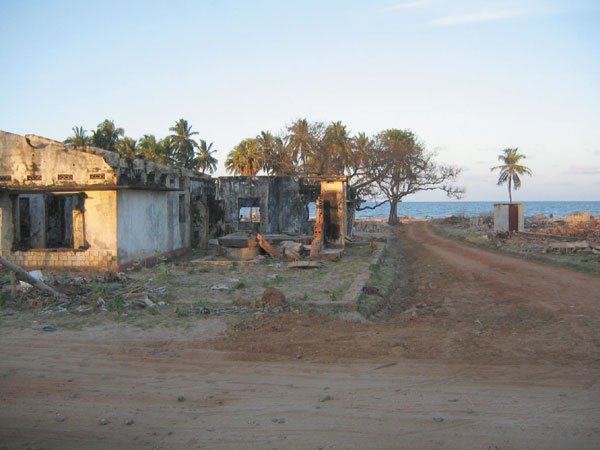We’ve all heard about the disastrous tsunami that hit Southern
Asia on Dec. 26: A magnitude 9.0 earthquake in the Indian Ocean
sent a tidal wave causing massive destruction in India, Indonesia,
Thailand and Sri Lanka. More than 5 million residents were
affected, and the death toll is still rising.
We’ve all heard about the disastrous tsunami that hit Southern Asia on Dec. 26: A magnitude 9.0 earthquake in the Indian Ocean sent a tidal wave causing massive destruction in India, Indonesia, Thailand and Sri Lanka. More than 5 million residents were affected, and the death toll is still rising.
Three South County men were involved in relief efforts in the hard-hit island nation of Sri Lanka. Chris Hauge, Joe Tourquato and Don Kenyon are members of Morgan Hill’s Westhills Community Church.
In early February, a missionary from Zambia was speaking at the church and challenged his listeners to show their Christianity in action by helping people in need. Immediately after the tsunami, there was a call for medical personnel to travel to the stricken area, but soon it became evident most of the victims were dead or already recovered. Then it became evident that there was a need for people with experience in water treatment.
The three men from Westhills had varied experiences in this area. Hauge had worked for a water company in Southern California for several years, Tourquato does engineering at Fresh Express and Kenyon is a pipe fitter. Backed by the generous financial support of members of their congregation, on Feb. 12 they set off on a 27-hour flight to the devastated paradise.
Arriving in the capital of Columbo, they drove seven hours to the town of Trincomalee in the northeast part of the country. This area has a large population of the Tamil ethnic group which had been struggling with the central government for many years seeking autonomy.
They worked with a Seattle-based missionary group, Action International, and a local relief organization, the Alliance Development Trust, treating wells to prevent disease. Most villagers’ wells were open pits 3 to 5 feet in circumference and 15 to 20 feet deep. Salt water had flooded the wells during the tsunami, and they were also contaminated with bacteria from nearby latrines.
Their work consisted of treating wells with chlorine, pumping out contaminated water, filling large tanks with clean water and training the residents to continue their work. Conditions were very primitive, and travel among villages was very slow. There were frequent stops at military check points, the roads were narrow and crowded with vehicles and pedestrians, wild elephants and cows had to be removed from the roadway frequently.
Hauge, the youth pastor at Westhills, heard many touching stories from survivors. One mother was trapped in an air pocket when her house was flooded while her daughter was swept out to sea. Another person told him about a strange occurrence just before the wave hit: hot, black water gushing out of the family well. Villagers pointed to expanses of scenic beach where residents’ homes were washed away by the receding waters.
Hauge calls his experience “an amazing two weeks” and thinks the native residents are “great people.” As a Christian, he found it interesting to live in a Buddhist-Hindu culture, but sad to see the prejudice of the Singhalese people toward their Tamil neighbors.












